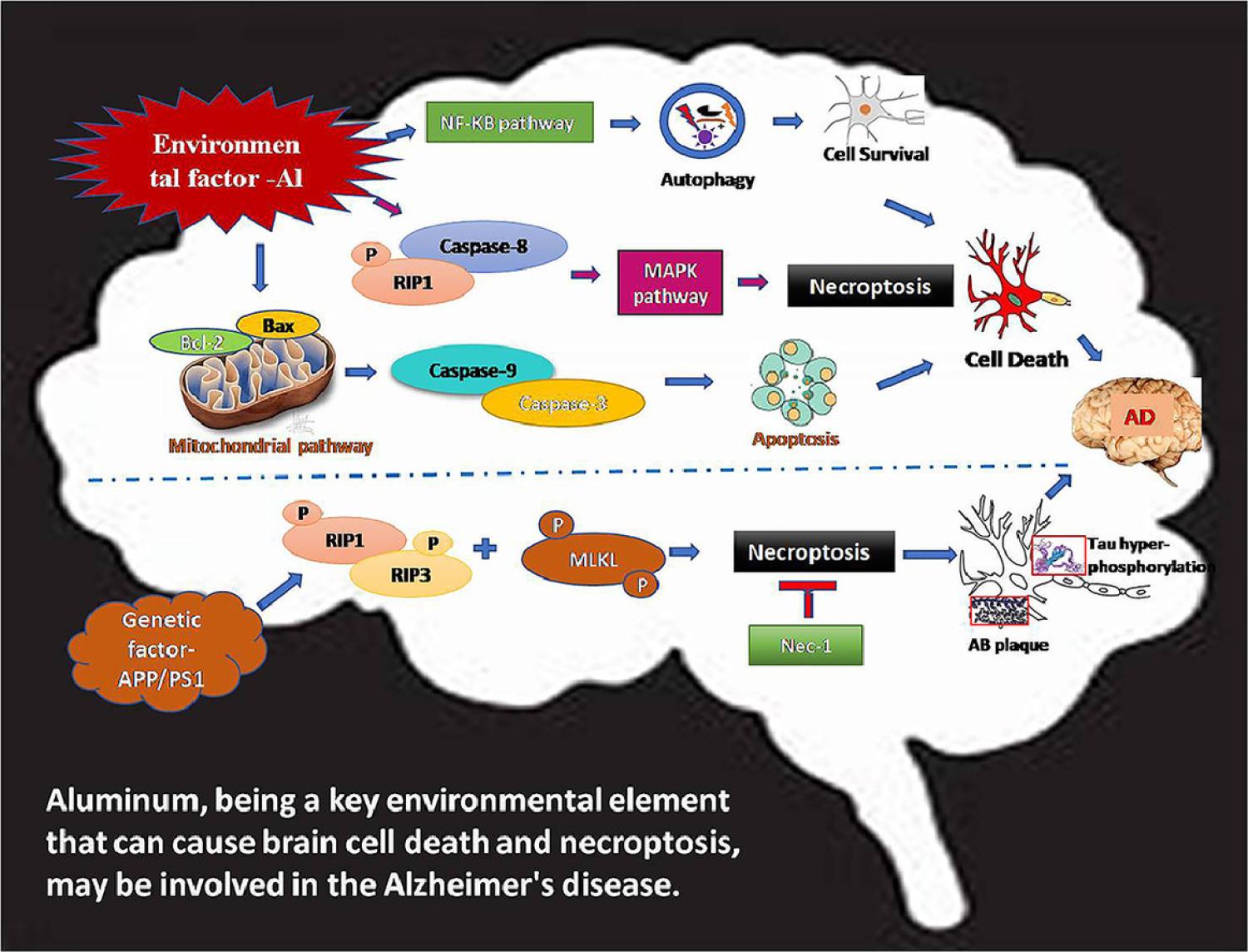
Introduction
Progressive neural cell loss is a pathological hallmark of Alzheimer's disease (AD). Environmental factors should be taken into consideration due to their epigenetic link to AD, and also because most of the causal environmental factors are preventable. Aluminum (Al) as a common risk environmental factor has been reported to be related to AD. Nonetheless, the nature, time duration, and molecular mechanism of neural cell death in Al-induced AD remain poorly understood. The present article reviews the role of necroptosis, as a novel cell death pathway, in Al-induced AD models in vitro and in vivo.
Methods
In the present review, Al-induced necroptosis is summarized in terms of neural cell death and AD animal models induced by Al compounds. Furthermore, a major role of necroptosis in AD is highlighted by comparing studies of apoptosis and autophagy in Al-induced neural cell death and AD animal models.
Results
Current research on Al-induced necroptosis has been summarized in Al-treated neural cells and animal AD models. Treatment with Necrostatin-1 (Nec-1) as its specific inhibitor could down-regulate expression of cell death and necroptosis-related proteins; finally, AD-related expression of the signal pathway declined accordingly. The results consistently implied that Al could induce necroptosis, and that Nec-1 could suppress neural cell death pathways not only in Al-induced necroptosis but also in apoptosis and autophagy. Compared with the inhibitors of apoptosis and autophagy, the effects of Nec-1 were more prominent. It indicated that necroptosis is a dominant cell death pathway in Al-treated neural cells and animal models.
Conclusion
Based on the relative literature, it has been suggested that necroptosis is involved in the process of Al-induced AD. It implies that Nec-1 represents a promising anti-Alzheimer's approach and has potential theoretical value in environmental factor Al-induced AD neuropathologies.
